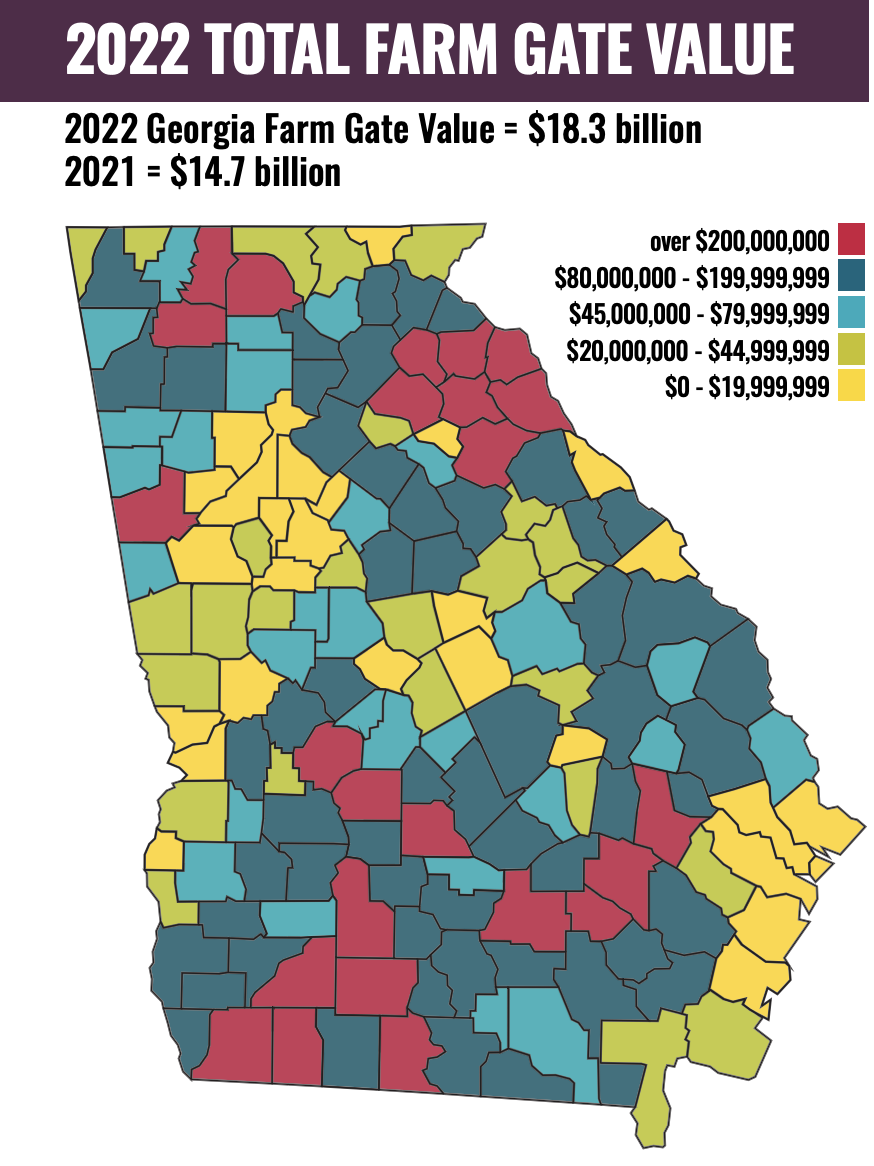
According to figures from the newly released Georgia Farm Gate Value Report for 2022, food and fiber production from Georgia’s 159 counties contributes more than $18 billion to the economy statewide.
The Georgia Farm Gate Value Report offers a comprehensive analysis of the county-level production value for Georgia commodities. The report is compiled and published by the University of Georgia Center for Agribusiness and Economic Development (CAED) within the College of Agricultural and Environmental Sciences (CAES) Department of Agricultural and Applied Economics.
“These figures showcase the diversity and vitality of Georgia’s agricultural economy,” said Sharon Kane, agribusiness and community development economist with CAED. “No industry operates in a vacuum. When agriculture is in a community, it’s not just about the farms, but economic activity along the supply chain — processing, manufacturing and beyond.”
The proprietary study is a monumental annual project during which experts from CAED partner with UGA Cooperative Extension agents to complete surveys based on each of Georgia’s counties.
“They know their counties well, we lend our expertise to pull it all together,” Kane said. “The report is both deep and wide — it contains in-depth detail on many Georgia commodities and covers all 159 counties.”
Empowering Georgians to make informed decisions
The Farm Gate Value Report is one part of a suite of publications aimed at providing support to Georgia’s agricultural community — and those curious about how agriculture impacts their county — through data-driven decision-making tools.
Released earlier this year at the 2024 Georgia Ag Forecast event, the 2024 Ag Snapshots provides a brief overview of Georgia’s agricultural industry. Authored by Kane, the report shares data on the top Georgia commodities, top indirect industries supported, Georgia farm statistics and more.
“The 2024 Ag Snapshots provide valuable insights into how production values stimulate additional economic activity throughout the agricultural supply chain and the broader economy,” Kane said. “Collectively, these efforts underscore the significant economic contribution to the state, totaling $83.6 billion in output and supporting 323,300 jobs.”
Valuing agricultural commodities by county
For a more localized perspective, Kane has developed the 2024 Ag Snapshots for Georgia Counties, an online, interactive graphic that explores the economic contribution of agriculture to all 159 Georgia counties.
“These figures encompass the combined impact of industries along the agricultural supply chain, incorporating not only production but also related processing and manufacturing sectors,” Kane said. “This tool serves as a vital resource for understanding the importance of the agricultural economy for each Georgia county.”
While Kane emphasized that these publications focus on data, a team of UGA Extension economists from the Department of Agricultural and Applied Economics is working on a series of reports — including looking at 20 years of farm gate value trends — that should be released later this summer.
“This data and the analysis to come impacts all Georgians as we choose, from scarce resources, what economic decisions to make every day,” Kane said. “People deserve to know what the economic engine is within their community. In many counties in Georgia, it’s agriculture.”
To learn more about UGA Extension and research efforts from the CAES Department of Agricultural and Applied Economics, visit agecon.uga.edu/extension.html.






